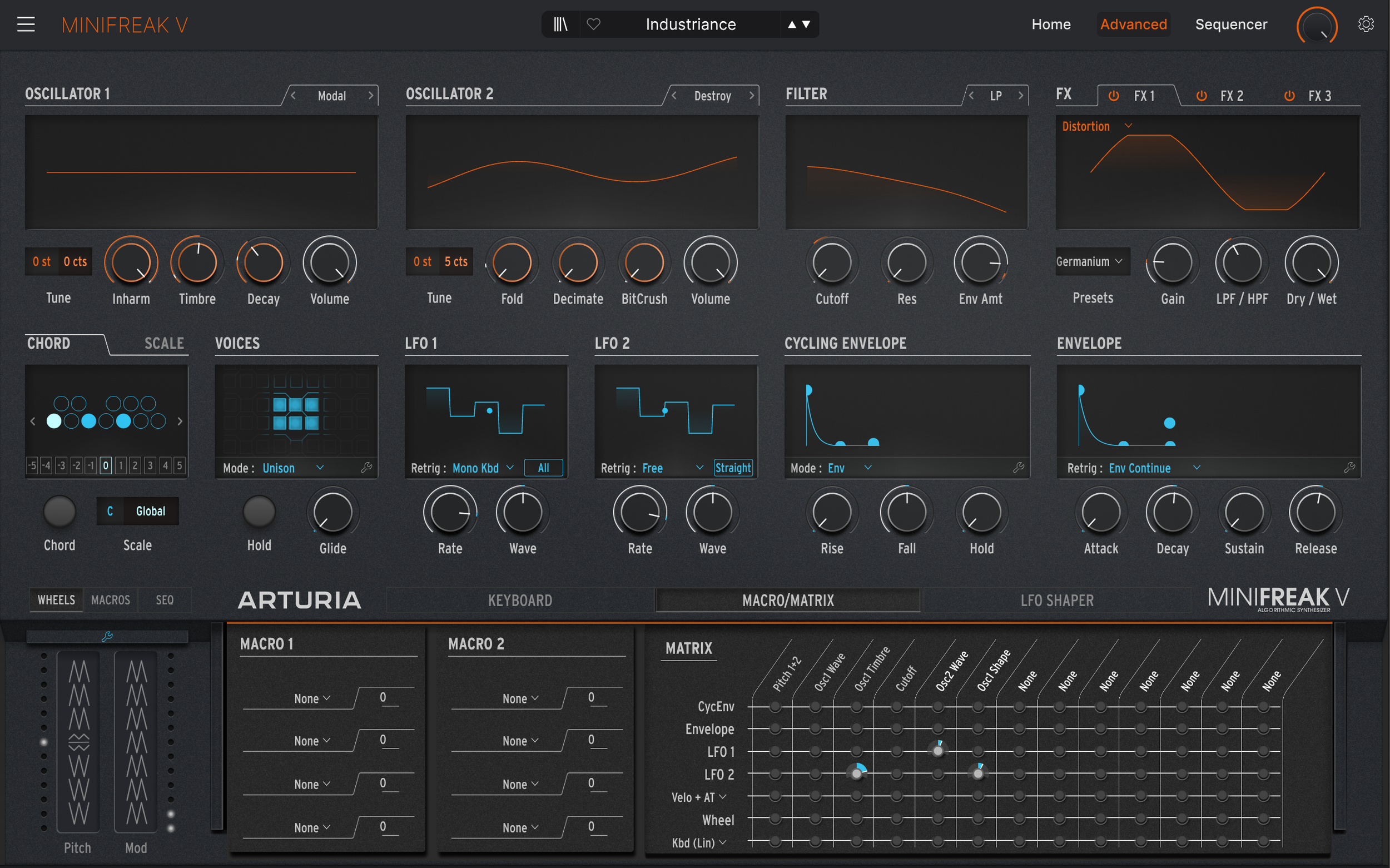MINIFREAK V Review
Arturia’s Minifreak V is their first hybrid plugin/hardware synthesizer. The successor to Microfreak, Minifreak comes in both a hardware format, with a parallel software version. The only difference between the two is the filters, as the analog filters on the hardware version are emulated in the software version. I can’t speak to their similarity, they might be spot on, but this is just a physical limitation. Minifreak is a two oscillator multimode synthesizer with one filter and three effects. The Real magic behind Minifreak is the variety of oscillator types, ranging from basic virtual analog, to FM, to physical modeling, and in a recent update, even wavetable.
While you can read about a few of my favorite oscillator modes in my Microfreak review, there’s a couple new ones exclusive to the mini. These special modes are only available in oscillator 2, as you can use this oscillator to process oscillator 1. These include FM/RM, multiple different filter modes, and a destroy effect. The FM/RM is really fun and can achieve some nice textural motion. There’s a comb and phaser filter for making some physically modeled sounds, though they aren’t particularly easy to get results with, and there’s already a couple physical modeling modes already. Lastly, destroy is a hybrid wave folder, decimator, and bitcrusher.
There is an effects section on the Minifreak V, something that felt missing from the Microfreak. You get three FX slots that can use any of the 11 effects options. You can only use one reverb or delay, but its open season on the other options. ADding reverb and delay to these oscillators really puts their character in context, but there’s a few other notable effects to play with. First of all, the distortion contains a few of the shaper types found in coldfire. There’s also the super unison effect from Pigments and Refrakt. A small EQ is always a pleasant site on a hardware compatible synth, as well as “multi-comp” an OTT type effect.
Minifreak also sports two LFO shapers, a step sequenced modulation source that lets you set a few different curve types to each step. This is capable of doing polymetrics as well, as I tend to enjoy pointing out. The modulation matrix on the Minifreak is quite a bit deeper with more sources and destinations to apply. I believe they mostly have the same sequencer, but applying the four motion sequenced controls in the software version is significantly easier, as you can draw out the pattern manually.
You can run audio into the Minifreak as well, to use it for processing external gear, this is fun with the FM/AM oscillator type. This could potentially be an easy way to get the OTT sound in a dawless format. Wavetables have been added to both versions now, and being able to port patches between the two is just awesome. I’m still holding out for granular though, I want the hardware version of Minifreak, and granular would really seal the deal for me. I love the look and design of the hardware version, I’m hoping they do a murdered out edition with black keys though. If there is anything I didn’t cover, I likely touched on it in my Microfreak review, as there’s a lot of crossover between the two devices, it’s worth giving that one a read as well.
If you plan on purchasing Minifreak V from Plugin Boutique, please consider supporting me by using my affiliate links
MINIFREAK V: https://www.pluginboutique.com/product/1-Instruments/4-Synth/10127-MiniFreak-V?a_aid=61c378ab215d5


